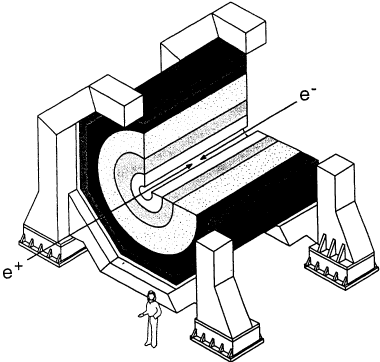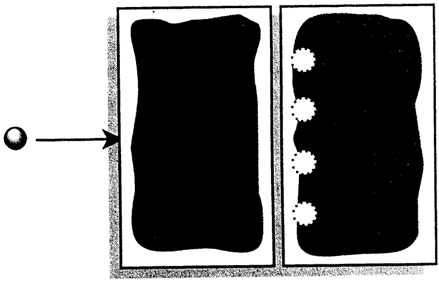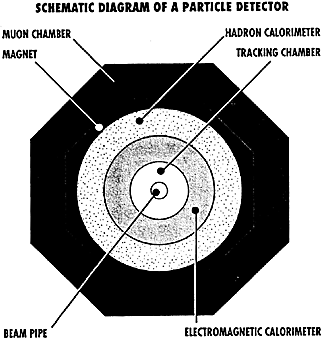

You will need these materials:
Follow these directions:
1. Place one lid upside down on the table and insert props at each corner to raise it just enough so that any of your marbles can roll under it.
2. Sprinkle iron filings in the lid so as to cover all of it. This is your simulated detector.
3. Roll a magnetic marble rapidly under this simulated
detector. Write your observations here.
________________________________________________
________________________________________________
________________________________________________
________________________________________________
________________________________________________
4. What property of the marble would you say your
detector is recording?
________________________________________________
5. Roll an ordinary marble under your detector. Record
your observations here.
________________________________________________
________________________________________________
________________________________________________
To which particle's behavior is this observation similar?
________________________________________________
Now construct a two-part detector that can be used to track "neutral" or "uncharged" particles by making a line of four or more magnetic marbles immediately beyond the first lid, and placing a second lid over them (see diagram below). Your two-stage detector will be complete when you have sprinkled iron filings in the second lid.

6. a) Roll an ordinary marble under the first detector. If it hits
a magnetic marble, what does the resulting trail in the
second detector tell you?
________________________________________________
________________________________________________
________________________________________________
________________________________________________
b) To which particles is this behavior similar?
________________________________________________
________________________________________________
________________________________________________
